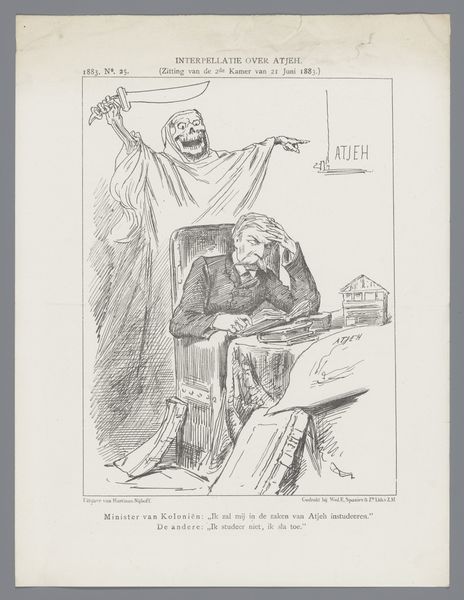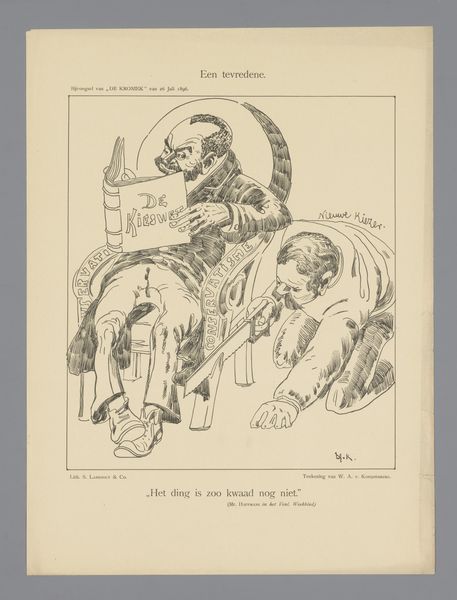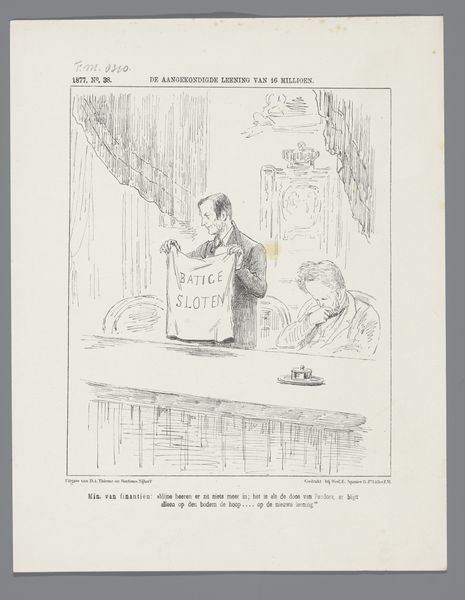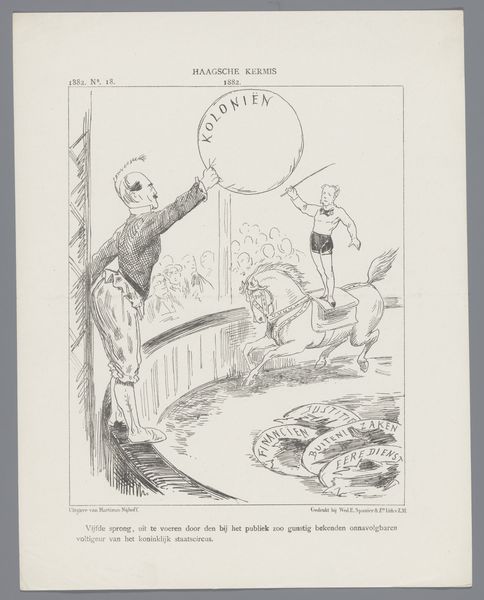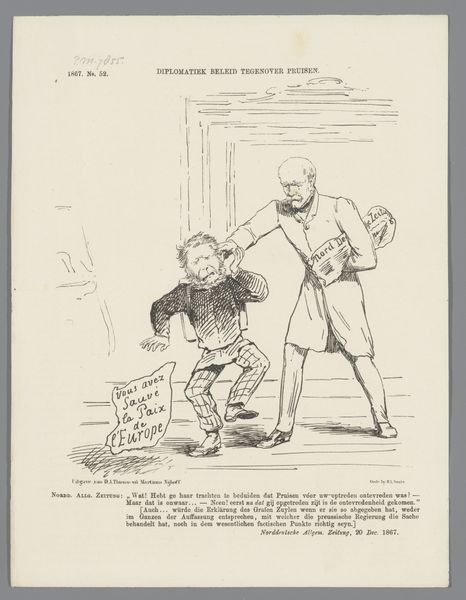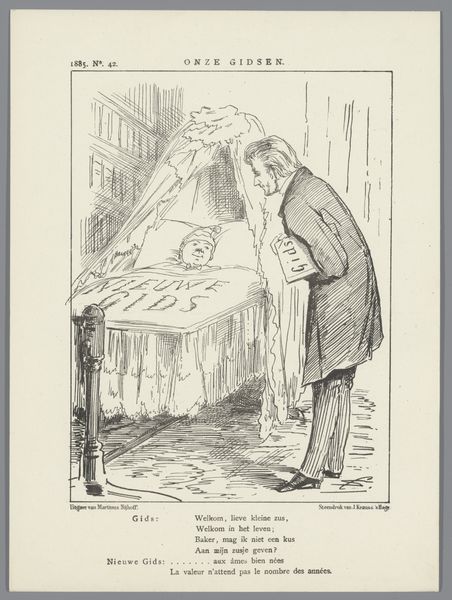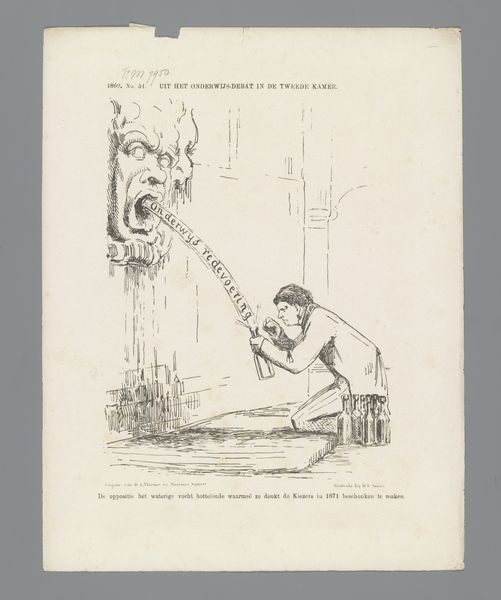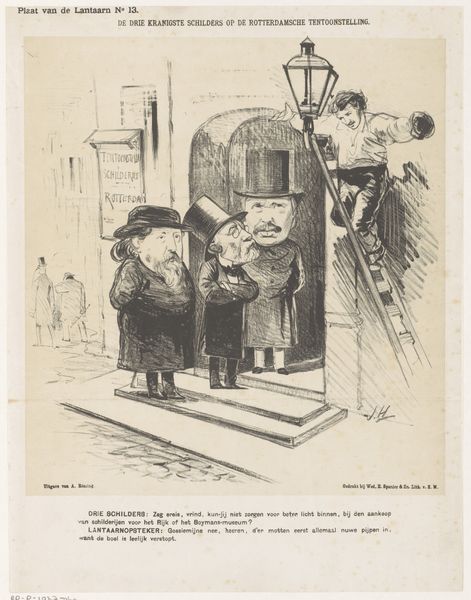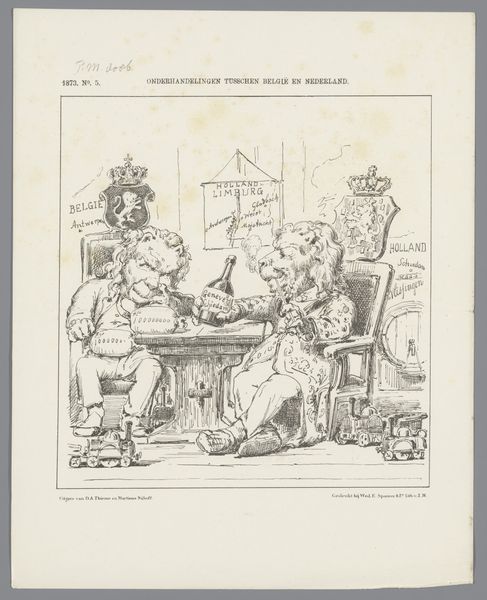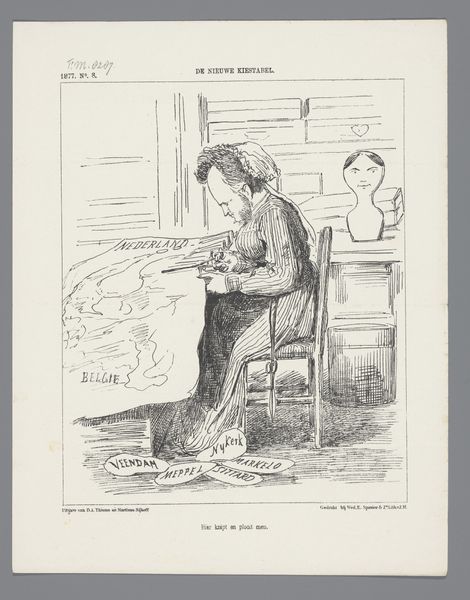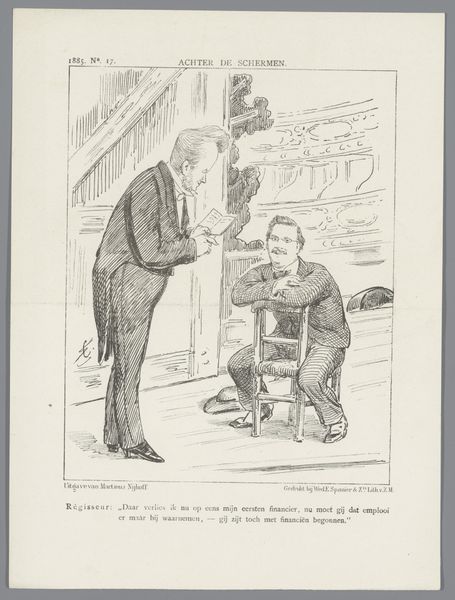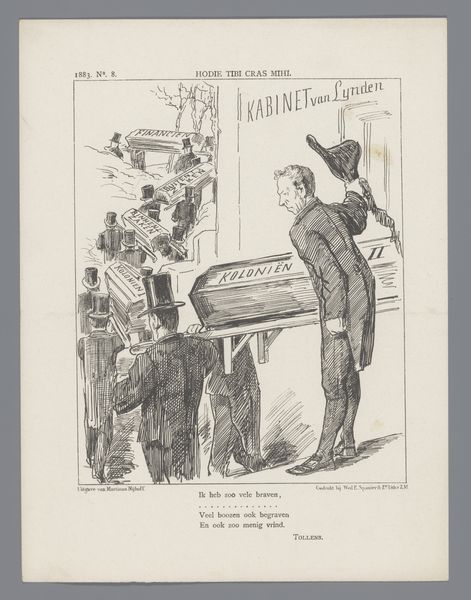
Allegorie op de hulp aan de getroffenen van de watersnood van maart 1855 1855
0:00
0:00
drawing, ink, pen
#
drawing
#
narrative-art
#
caricature
#
ink
#
pen
Dimensions: height 275 mm, width 388 mm
Copyright: Rijks Museum: Open Domain
Curator: Look at the crosshatching in this ink drawing, completed with pen in 1855 by Alexander Ver Huell, whose name you might know through his narrative art. It's titled Allegorie op de hulp aan de getroffenen van de watersnood van maart 1855. It's quite a mouthful! Editor: At first glance, this looks like an anguished commentary on the struggles of bureaucracy. The stark black and white intensifies a feeling of despair. The scale is fascinating. Is it quite small? Curator: Yes, it’s a drawing, but it speaks to larger sociopolitical problems stemming from the devastating floods in March 1855. It depicts the Ministerie Heemskerk. Editor: Notice how the symbolic shield with ‘Ministerie Heemskerk’ is represented, almost like a punctured and collapsing face. I would argue the figures crawling around the central character further add to the oppressive atmosphere. They remind me of carrion beetles. Curator: Precisely. These tiny figures, attempting to tie strings labeled "kolonien," "Marine," and "Justitie" reflect the attempt to manage the unmanageable after the disaster. The strings could represent different governmental departments whose hands were tied to the flooding emergency and whose functions may be undermined. What about that single, ominous figure in the shadows? Editor: Yes, obscured within what appear to be institutional pillars and arches is that sinister lurking silhouette. It appears the institution and the flood damage made those harmed dependent and helpless. Curator: These visual components expose political anxieties about power in moments of disaster. This also tells us that power relies on imagery. It is only the minister who has full size, despite all those structures and institutions dwarfing him from behind. Editor: It reveals a deep-seated sense of governmental weakness and the inadequacy of political efforts. The fact that it relies on symbols makes it strangely powerful for generations to come. Curator: We can think about how representations of power operate discursively, not merely illustrating events but shaping our perceptions and memories. It remains remarkably salient today. Editor: Precisely. Visual elements and stark colors can communicate across time and the specific events recede, while core anxieties and the symbolic resonance stay strong.
Comments
No comments
Be the first to comment and join the conversation on the ultimate creative platform.
